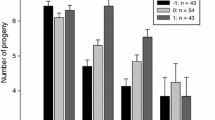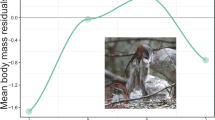Abstract.
More than a half century ago, the British ornithologist David Lack suggested that parent birds may use brood reduction to track uncertain food, a process facilitated by the asynchronous hatching of their young. Lack sketched the logic of asymmetric sibling rivalry: the phenotypic handicap imposed upon last-hatched marginal offspring renders their growth and survival conditional upon uncertain ecological conditions while buffering first-hatched core offspring from the inimical effects of overcrowding during periods of stringency. Though subjected to numerous indirect tests in short-term studies, the central prediction of Lack's hypothesis – that parents use marginal offspring to track unpredictable brood-rearing conditions and thus achieve a secondary adjustment of clutch size – has never been tested directly. Here we present the results of a 7-year study of marsh-nesting red-winged blackbirds (Agelaius phoeniceus) showing that (1) brood size tracks interannual variability in growth and survival of nestlings, (2) the growth and mortality of marginal but not core offspring is contingent upon stochastic environmental conditions (mean air temperature) during brood rearing, (3) the mortality of marginal but not core offspring is strongly affected by developmental uncertainty in the form of both experimental and natural alterations of brood size, (4) the phenotypic handicap of hatching asynchrony buffers core offspring from poor growth conditions, but (5) its effects upon marginal nestlings are reversible when growth conditions are favourable and especially when brood size is reduced either experimentally or via hatching failure. The presence of marginal offspring ensures that blackbird parents are not left with a too small brood when brood-rearing conditions are favourable. Parents create two castes of progeny: marginal offspring that are strongly affected by both ecological and developmental stochasticity, and core offspring that are not.
Similar content being viewed by others
Author information
Authors and Affiliations
Additional information
Electronic Publication
Rights and permissions
About this article
Cite this article
Forbes, S., Glassey, B., Thornton, S. et al. The secondary adjustment of clutch size in red-winged blackbirds (Agelaius phoeniceus). Behav Ecol Sociobiol 50, 37–44 (2001). https://doi.org/10.1007/s002650100332
Received:
Revised:
Accepted:
Issue Date:
DOI: https://doi.org/10.1007/s002650100332




